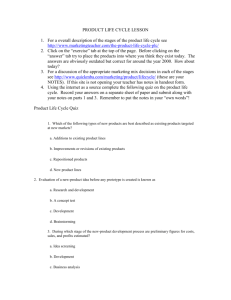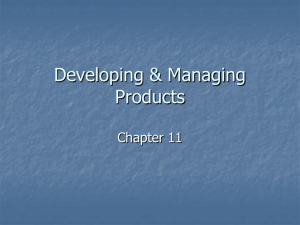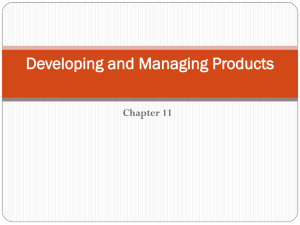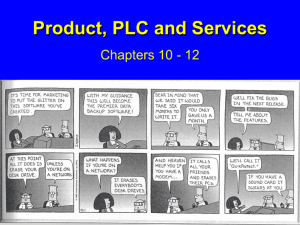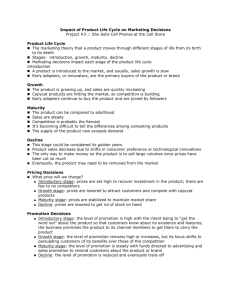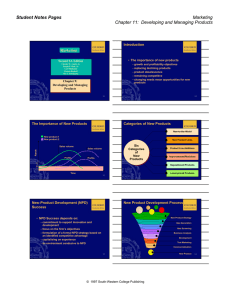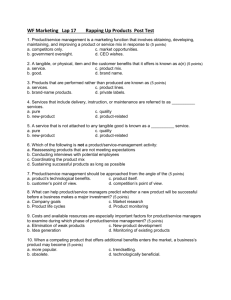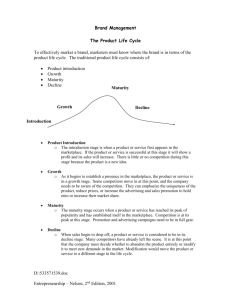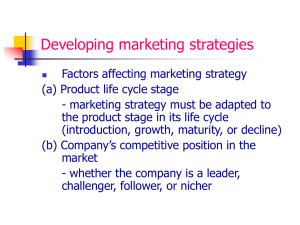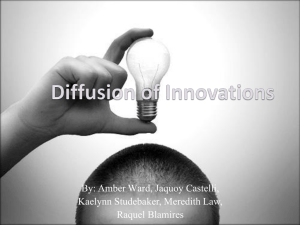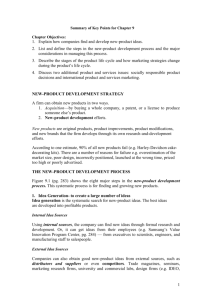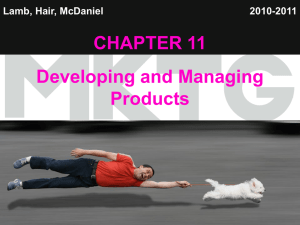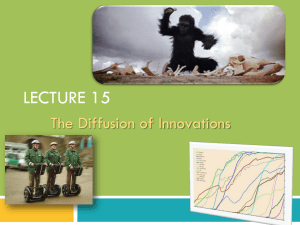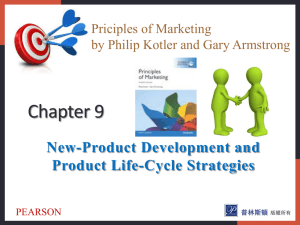10. Developing and Managing Products
advertisement
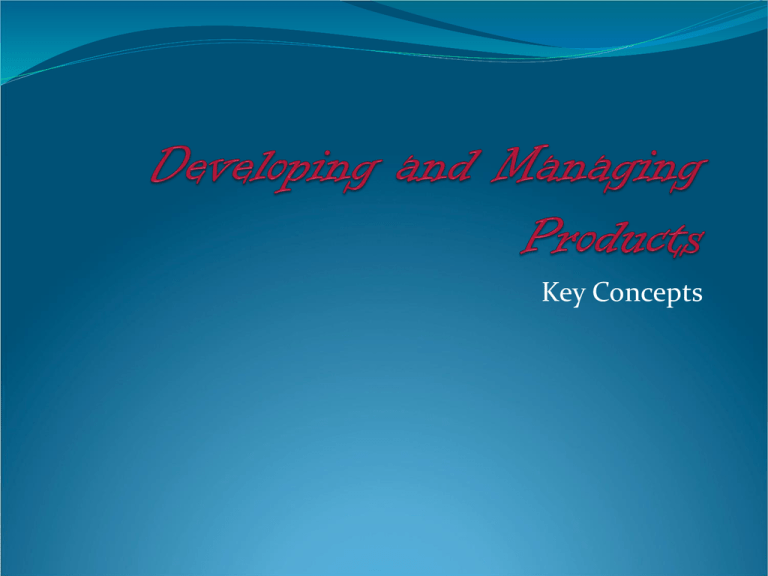
Key Concepts The New-Product Development Process New Product Success Factors Long-term commitment Company-specific approach Capitalize on experience Establish an environment New-Product Development Process New-Product Strategy Idea Generation Idea Screening Business Analysis Development Test Marketing Commercialization New Product Idea Generation Where Good Product Ideas Come From Customers Employees Distributors Competitors Sources of New-Product Ideas Vendors R&D Consultants Tips for Successful New Product Development Disperse R & D around the globe Keep teams small and empower employees Flatten hierarchy Encourage generation of crazy new ideas Welcome mistakes Business Analysis To Ensure Project is Feasible Demand Considerations in Business Analysis Stage Cost Sales Profitability Product Development Different Aspects of Development Creation of prototype Marketing strategy Packaging, branding, labeling Promotion, price, and distribution strategy Manufacturing feasibility Final government approvals if needed Test Marketing Test Marketing The limited introduction of a product and a marketing program to determine the reactions of potential customers in a market situation. Alternatives to Test Marketing Single-source research using supermarket scanner data Simulated (laboratory) market testing Online test marketing Commercialization Bringing Product to Market Production Inventory Buildup Distribution Shipments Sales Training Trade Announcements Customer Advertising New-Product Development Process From Ideas to Market Why New Products Fail No discernible BENEFITS POOR MATCH between features and customer desires Overestimation of market SIZE Incorrect POSITIONING PRIE too high or too low Inadequate DISTRIBUTION Poor PROMOTION INFERIOR product Factors in Successful New Products Match between product and market needs Different from substitute products Benefit to large number of people Success Factors Listening to customers Strong leadership Producing the best product Commitment to newproduct development Vision of future market Project-based team approach Getting every aspect right The Spread of New Products The diffusion process and how new products are adopted Diffusion Diffusion The process by which the adoption of an innovation spreads. Categories of Adopters Innovators Early Adopters Early Majority Late Majority Laggards Product Characteristics and how fast new products are adopted Complexity Compatibility Relative Advantage Observability Trialability Sales of New Audio Products Marketing Implications of the Adoption Process Word of Mouth Communication Aids the Diffusion Process Direct from Marketer Diffusion Process for New Products Product Life Cycle Product Life Cycle A concept that provides a way to trace the stages of a product’s acceptance, from its introduction (birth) to its decline (death). Product Life Cycle Growth Stage Maturity Stage Dollars Introductory Stage Decline Stage Sales Profits 0 Time Product Life Cycles for Styles, Fashions, and Fads U.S. Sales of Televisions Introductory Stage High failure rates Little competition Frequent product modification Limited distribution High marketing and production costs Negative profits with slow sales increases Promotion focuses on awareness and information Communication challenge is to stimulate primary demand Introductory Stage How it works in Europe Growth Stage Increasing rate of sales Entrance of competitors Market consolidation Initial healthy profits Aggressive advertising of the differences between brands Wider distribution Maturity Stage Sales increase at a decreasing rate Saturated markets Annual models appear Lengthened product lines Service and repair assume important roles Heavy promotions to consumers and dealers Marginal competitors drop out Niche marketers emerge Decline Stage Long-run drop in sales Large inventories of unsold items Elimination of all nonessential marketing expenses “Organized abandonment” Diffusion Process and PLC Curve Sales Introduction Growth Decline Maturity Product life cycle curve Early majority Late majority Early adopters Innovators Laggards Diffusion curve Product Life Cycles INTRODUCTION Sales Product Strategy Limited models Frequent changes GROWTH More models Frequent changes. Distribution Strategy Limited Expanded Wholesale/ dealers. Longretail distributors term relations Promotion Strategy Awareness. Aggressive ads. Stimulate Stimulate demand. Sampling demand Pricing Strategy High to recoup development costs Fall as result of competition & efficient production. Time MATURITY DECLINE Eliminate Large number unprofitable of models. models Extensive. Margins drop. Shelf space Phase out unprofitable outlets Advertise. Promote heavily Phase out promotion Prices fall (usually). Prices stabilize at low level.
